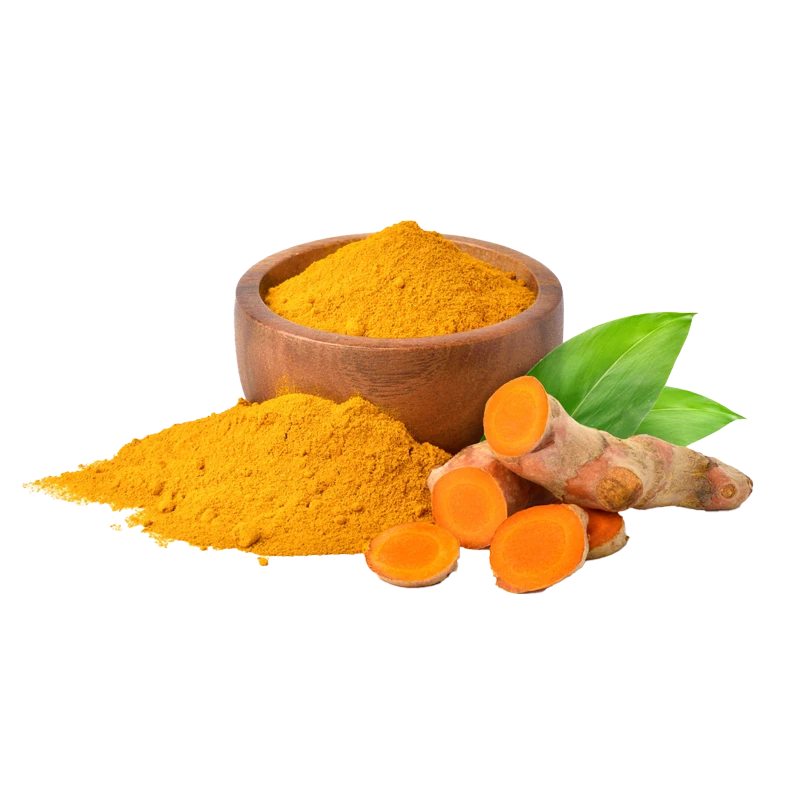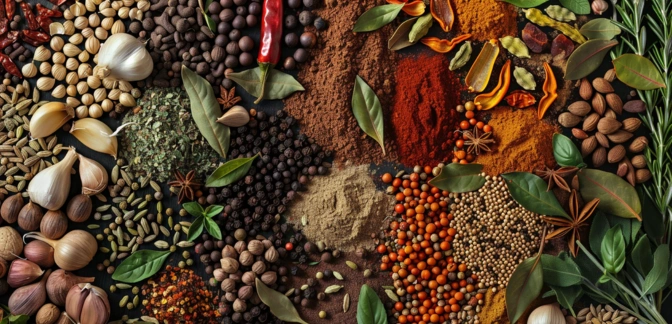Turmeric — Nutrients, Health Benefits, and Shopping Tips

Written by Listonic Team
Last update on September 4, 2024
Turmeric nutrients
Nutrition facts
Amount per 100 g
Calories
🔥 354 kcal
| Nutrition per: 100 g | Value | % Daily Value* |
|---|---|---|
| Carbs | 65 g | 23.64% |
| Fiber | 21 g | 75% |
| Sugars | 3 g | 6% |
| Glycemic Index | 10 | - |
| Protein | 8 g | 16% |
| Sodium | 38 mg | 1.65% |
| Total Fat | 10 g | 12.82% |
*The % of Daily Value (DV) tells you how much a nutrient in a serving of food contributes to a daily diet. 2,000 calories a day is used for general nutrition advice.
21 g
✅ High Fiber Content
10
🟢 Low Glycemic Index
Turmeric facts & tips
Health benefits
- Contains powerful anti-inflammatory compounds such as curcumin, which help reduce inflammation and pain.
- Rich in antioxidants, which help protect the body from free radicals and reduce oxidative stress.
- Supports digestive health by stimulating the production of bile, which aids in digestion.
- May improve brain function and reduce the risk of brain diseases by boosting levels of brain-derived neurotrophic factor (BDNF).
- Supports heart health by improving the function of the endothelium (the lining of blood vessels) and reducing inflammation.
Health risks
- Potential for digestive discomfort such as nausea, diarrhea, or stomach upset when consumed in large quantities, particularly in individuals sensitive to spicy or strong-flavored foods.
- Risk of allergic reactions in some individuals, particularly those allergic to turmeric or related plants (e.g., ginger), causing symptoms like itching, swelling, or difficulty breathing.
- Potential for interactions with medications particularly blood thinners, diabetes medications, or drugs that affect stomach acid, as turmeric may enhance or interfere with these medications' effects.
- Potential for kidney stones as turmeric is high in oxalates, which can contribute to the formation of kidney stones in susceptible individuals when consumed in large quantities.
- Risk of contamination with heavy metals like lead in some turmeric products, particularly those that are not tested or certified for purity, posing long-term health risks.
How to choose turmeric
Turmeric should have a vibrant orange-yellow color and a pungent, slightly bitter aroma, indicative of its freshness and potency. The powder should be fine and free from any lumps, ensuring it blends smoothly into dishes.
Avoid turmeric that is pale or has a musty smell, as it may be stale and less effective. Powder that clumps together or has a dull color should also be avoided, as it won't provide the health benefits or flavor typically associated with fresh turmeric.

How to store turmeric
Turmeric should be stored in an airtight container in a cool, dark place. This preserves its vibrant color and potent flavor for up to a year. Proper storage helps maintain its quality and prevents it from clumping.
Exposure to light and moisture can cause turmeric to lose its potency. Avoid storing it near heat sources, which can degrade its flavor. Always ensure the container is tightly sealed to prevent contamination and preserve its aromatic properties.
✅ Extra Tip
How long does it last?
Turmeric can last for 2-3 years when stored in an airtight container in a cool, dark place. For the best flavor, use it within 1 year.
What to do with leftovers?
Leftover turmeric can be used in a variety of culinary and non-culinary ways. In the kitchen, turmeric is a vibrant yellow spice that adds a warm, slightly bitter flavor to dishes like curries, soups, rice, and roasted vegetables. It’s also used to add color and depth to spice blends, such as curry powder and masala.
Beyond cooking, turmeric has several non-culinary uses due to its anti-inflammatory and antioxidant properties. It can be used in DIY beauty treatments; for example, mixing turmeric with yogurt or honey creates a natural face mask that can help brighten the skin and reduce acne. Turmeric can also be made into a paste with water or coconut oil to help soothe minor cuts and insect bites due to its antiseptic properties. Additionally, turmeric can be used in wellness routines, such as adding it to warm milk to create "golden milk," a drink believed to help reduce inflammation and boost the immune system. Turmeric can also be used as a natural dye for fabrics, giving them a rich yellow color.
👨⚕️️ Medical disclaimer
Discover products from other categories
Listonic Team
Fact-checked
Our editorial team checked this article to make sure it was accurate at the time of publishing it.
Get the top-rated shopping list app on your phone!







